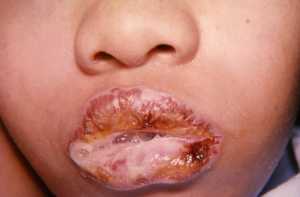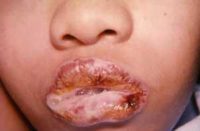
16 Jul Severe Skin Reactions TEN/SJS: Children Generally Do Better Than Adults
MedicalResearch.com Interview with:
 James W. Antoon, MD, PhD
James W. Antoon, MD, PhD
Pediatric Primary Care
University of Illinois Hospital
MedicalResearch.com: What is the background for this study? Would you briefly explain what is meant by Stevens-Johnson syndrome (SJS) and toxic epidermal necrolysis?
Response: Stevens Johnson syndrome (SJS) and toxic epidermal necrolysis (TEN) are potentially fatal skin conditions, most commonly caused by medications and infections. Early symptoms include fever, blistering and peeling of the skin and mucus membranes and can affect any organ system including the eyes, lungs, kidneys and intestines. While rare, the conditions often result in life-long effects. The rarity and severity of these diseases have made it a challenge for researchers and clinicians to study, especially in a pediatric population. As a result, much of the information used to drive our care for children is derived from adult studies.
MedicalResearch.com: What are the main findings?
Response: Using the Pediatric Health Information System, a large pediatric database containing information from 45 U.S. children’s hospitals, we studied the treatment and outcomes of SJS and TEN in children. This is one of the first large-scale to benchmark clinical outcomes the conditions in children. We characterized outcomes such as cost of hospital care, length of hospital stay, mortality, recurrence, hospital readmission as well as short-term complications like kidney failure, respiratory failure and sepsis.
Overall, we found that these outcomes in children were better than in adults. We also found that children with SJS and TEN received different kinds of treatment and that treatment strategies varied by region of the country. Expensive or combination treatments did not necessarily result in better outcomes.
MedicalResearch.com: What should readers take away from your report?
Response: Overall, these findings suggest we can be cautiously optimistic about SJS and TEN outcomes in children. Mortality and short-term morbidity in children with SJS and TEN is lower than in adults. Our results also suggest we can potentially reduce the cost of care for families by selecting lower-cost treatments to achieve the same outcomes.
MedicalResearch.com: What recommendations do you have for future research as a result of this work?
Response: We identified a large variation in the treatment kids with SJS and TEN received, yet outcomes did not differ between treatments. This usually indicates an area for improvement in the quality of care doctors provide. Further research focusing on strategies that reduce complications, hospital stays and the cost of care would help provide physicians with better evidence on how to treat these conditions.
MedicalResearch.com: Is there anything else you would like to add?
Response: The study was performed in collaboration with Drs. Jennifer Goldman and Brian Lee of Children’s Mercy Hospital and Clinic in Kansas City, Missouri, and Dr. Samir Shah of Cincinnati Children’s Hospital Medical Center. Dr. Goldman’s work was supported in part by a grant (KL2TR000119) from the National Center for Advancing Translational Sciences, part of the National Institutes of Health.
Citation:
J Allergy Clin Immunol Pract. 2018 May 30. pii: S2213-2198(18)30346-5. doi: 10.1016/j.jaip.2018.05.024. [Epub ahead of print]
A Retrospective Cohort Study of the Management and Outcomes of Children Hospitalized with Stevens-Johnson Syndrome or Toxic Epidermal Necrolysis.
Antoon JW1, Goldman JL2, Shah SS3, Lee B4.
[wysija_form id=”3″]
[last-modified]
The information on MedicalResearch.com is provided for educational purposes only, and is in no way intended to diagnose, cure, or treat any medical or other condition. Always seek the advice of your physician or other qualified health and ask your doctor any questions you may have regarding a medical condition. In addition to all other limitations and disclaimers in this agreement, service provider and its third party providers disclaim any liability or loss in connection with the content provided on this website.
Last Updated on July 16, 2018 by Marie Benz MD FAAD
